The IEP for the Gifted Learner
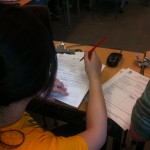 As a teacher for Gifted and Enriched students, I have spent many hours working with teachers, parents and learners on developing Individual Education Plans (IEP) for Gifted and Enriched learners. The IEP has a clear purpose and its process for development is not a difficult one to grasp. Regardless of school, district, or even country, the IEP has similar characteristics: To identify the learner’s strengths and weaknesses, to set measurable goals and objectives, to identify the tools and resources (including people) needed, to identify the strategies needed to achieve the goals and finally, as a team, to commit. Yes, there are subtle differences in language from district to district (modification, accommodation), but the overall purpose and gist of the IEP remain the same: To set our students up for success by ensuring they are getting a fair chance at learning.
As a teacher for Gifted and Enriched students, I have spent many hours working with teachers, parents and learners on developing Individual Education Plans (IEP) for Gifted and Enriched learners. The IEP has a clear purpose and its process for development is not a difficult one to grasp. Regardless of school, district, or even country, the IEP has similar characteristics: To identify the learner’s strengths and weaknesses, to set measurable goals and objectives, to identify the tools and resources (including people) needed, to identify the strategies needed to achieve the goals and finally, as a team, to commit. Yes, there are subtle differences in language from district to district (modification, accommodation), but the overall purpose and gist of the IEP remain the same: To set our students up for success by ensuring they are getting a fair chance at learning.
It should be easy then. However, with Gifted learners, there is much debate and discussion about the IEP. In my school district, we use both group testing (all students in Grade Four are given the CCAT test) followed by Individual testing (WISC-IV) and students usually score within the 95th to 99th percentile on these tests in a variety of areas, including overall IQ. Only a very very small portion of children or adults would score in this range (1-2% of the population). This alone should sound the alarm bells. These students are not in the norm and SHOULD NOT be receiving the same programming as the rest. We would say no different for students who are scoring at the other end of the scale and require significant modifications in their learning. Further, just like within the general population of learners, these students are just as likely to present with a Disability. Sometimes, the gap between the two areas is quite wide…sometimes debilitatingly so.
Strength-Based Goals:
Many students who are Gifted may not display obvious areas of “Need”. There is no use in searching for areas of weakness simply so you can put it on the form. CREATE the goal from there overall strength. On the other hand, many students who are identified Gifted in one area, may struggle greatly in another area or may have significant learning disabilities. It is important that the student’s IEP sets goals that are also non-academic, such as social skills, organizational skills and personal and intrapersonal skills, which are often a struggle for Gifted learners.
Student-Driven IEP and the PORTFOLIO:
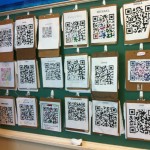 In another post, I shared some strategies on how to involve the students in the IEP process, Here, I emphasis the following and share examples from my own class:
In another post, I shared some strategies on how to involve the students in the IEP process, Here, I emphasis the following and share examples from my own class:
1) Ask for Student Input when developing the IEP. Of course, this would depend on the age group and how you structure the questions and interviews. Around the second week of school, I handed out the IEP’s to the students and had them go through and add, edit, and comment on each of the sections. Most of them had neither seen or heard of the “IEP” before so it took a bit of time to explain the terms (accommodations, modification, strategies, methods).
2) Meet with the students individually and go through the IEP’s with them explaining how and why this document came to be. Help them understand their own identification and what they need to best succeed.
During the first month of school students did research on their own exceptionality. Many of the students wrote blogs about what it means to be “Gifted” or as they often see it, “Labelled”. Set aside time for students to continually develop and alter their own programs. Don’t let this be a “one-off” lesson. Build this into a weekly plan. Build it around their Learning Skills.
We did this every week with tea. We tried to discuss one area of need or learning skill. What does it mean to be responsible? How much independence should students have at what age? What is fair and equal when it comes to learning? How do we advocate and ask for feedback?
4) Provide an organized system for students to view and edit their IEP’s as needed. Of course, since some parts of this document may be highly confidential, the template would need to be altered.
5) When updating the IEP’s every term, send home the “working copy” along with the formal copy to allow the parents and families to see how much student input is valued
This IEP development strategy takes a lot of trust and relationship-building to work. Students need to feel safe and free to express their honest feelings and advocate for themselves. One student said to me after reading his IEP (prior to his input), said, “Wow, I sound like an anti-social nerd that has no friends”.
Here are a few case examples created by Beth Carey and Zoe Branigan-Pipe (although there are many many many more, since the IEP should reflect each individual child). These examples are only meant to provide a starting point to help when creating a “Gifted” IEP.
Student Profile/Achievement: Student has strong academics in all area’s (All 95% or above); in the 99th percentile of testing. Motivated to learn and always seeking out opportunities, rarely feeling challenged by the school. Proficient in reading (more than 3 grades above) and proficient in Math and Science. Strong abilities in Music and Languages.
Annual Goal: Students will use higher-order thinking skills to enrich the depth and breadth of grade-level learning expectations.
Learning expectation: Student will use divergent thinking skills during classroom learning activities, independent activities and home learning; Student will use convergent thinking skills (bringing together a range of ideas and resources to support a central topic or idea); Student will use critical thinking and questioning skills to enhance the depth of thinking
Teaching strategy: Provide opportunities for the student to learn what it means to think divergently (research/inquiry project, TedX videos..); Provide a schedule/contract for the student (allow, encourage accountability, growth); Support student’s ability to ask questions to/with peers and teachers that encourage others to think deeper about a topic, especially one that focuses on current, local and global issues; Encourage home learning opportunities (use of Khan Academy for skill mastery, use of a blog, community activism – writing and co-created blogs); Encourage and demonstrate the use of mind mapping
Assessment: Student will demonstrate a variety ways to express a skill, concept or idea that is presented to the whole class and will add 2 items in the portfolio each month (self-evaluation); During formal assessments, the student will provide more than one answer, with justification – even when there is a question with a specific answer; Teacher will provide a comment/feedback to the student during scheduled teacher conference; Student will bring home a portfolio for parent feedback; Allow students to share the answer orally
Student Profile/Achievement:
Student consistently exceeds grade expectations in literacy-based subjects and has demonstrated strong verbal abilities and expression (99%tile in oral language abilities and verbal comprehension)
Annual Goal: Students will further develop higher-level oral communication skills.
Learning Expectation: Student will use real-world topics (shared through portfolio and monitored with the teacher) and current events to apply verbal/oral language tools as a way to share and demonstrate learning; Student will investigate, listen and analyze podcasts of interest (one per month); Student will use oral language to demonstrate learning, discuss ideas and brainstorm using inquiry-based strategies
Student Profile/Achievement:
Student excels at reading, both fiction (in particular Fantasy Genre) and non-fiction. Tests indicate strong perceptual reasoning, processing speed and working memory. The student will read as often as possible and enjoys discussing or debating the content. The student demonstrates strong comprehension skills and can recall information and facts with ease.
Annual Goal: Students will develop analytical skills in reading using more challenging literature; Student will apply reading strengths to increasing writing (finding new vocabulary and structures)
Learning Expectation: Student will analyze texts by identifying many elements that give the text depth or meaning and will maintain a blog or journal of these elements; Student will be able to draw a conclusion about the author’s work through in-depth analysis, ongoing discussions and comparisons and will maintain a blog or journal of these elements
Student Profile/Achievement:
The student writes descriptively and uses figurative language expertly as well as above grade level vocabulary and grammar. Report card grades reflect exceptional written assessment. Gifted Assessment report indicates the student is in the very superior range in all cognitive areas.
Annual Learning Goal: Student will write in a variety of genres using a blog format and will submit at least 4 publications throughout the year to a pre-approved magazine or blog (provide a real-world opportunity); Student will pick 10 new vocabulary words per week and keep a journal of new words.
Learning Expectations: Student will use poetry and prose to write essays, narratives, and poems and will include figurative language; Student will keep a poetry journal updated weekly; Students will communicate to a wider audience and use reflective and communication skills to respond to others in writing
Student Profile/Achievement:
The student demonstrates strong abilities in mathematical reasoning, computation and problem-solving. The student has strong processing and working memory skills. Gifted Testing and Report Card grades are consistent in demonstrating that student exceeds above grade level in all mathematical subjects which require modification in the depth and breadth of the content.
Annual Learning Goal: Student will complete several projects related to Math (timelines and content determined in a co-created portfolio); Student will complete a self-monitored Math course (using MOOC, or COURSERA); Student will create a Math Blog that highlights interesting Math problems and discoveries that impact the world around him/her
Learning Expectations: Student will blog weekly about math-related content; Student will be self-directed in his/her math learning by seeking out problems and investigations that related to a specific area (as determined by student and teacher)
Student Profile/Achievement:
The student is disorganized at school and home and frequently does not turn in homework and classroom assignments. The student is easily distracted and has trouble staying on task for more than 10 minutes. The student is easily disengaged at school and often complains of being bored. The student has low processing skills and working memory and needs specific accommodations.
Annual Learning Goals Student will complete class assignments on a timeline co-created with teacher and parent; Student will maintain an organized desk, binder (could be an online shared binder) and “to-do” list, to be checked weekly by teacher
Learning Expectations: Student will use technology tools to aid with scheduling (online calendar, online portfolio such as Onenote, Evernote, Google Drive (and can share with the teacher and parent); Students self-organize and will use to-do lists each day; Student will “check-in” with the teacher each day to guide on-task work and self-monitor how much he/she has completed; Student will keep a portfolio that includes timelines, lists and checklists and will have this monitored by the teacher; Student will use his/her device to take pictures of assignment outlines, homework board, etc
Student Profile/Achievement:
The student demonstrates strong leadership skills through on-going involvement in student leadership, clubs, and extracurricular activities. The student demonstrates a strong stance toward social justice including a desire to work in the political arena.
Annual Learning Goals: Student will lead at least TWO events, club or organizations throughout the school year (school-based, online or community-based); Student will maintain at a leadership blog (choice of topic)
Learning Expectations: Student will read a book about leadership development and will share the overall learning, thought and reflections of the book on his or her blog; Student will register the School as a “We Act School” and be the communication link for the school and will complete the on-line follow up focusing on local and global initiatives.
Student Profile/Achievement:
The student has a superb memory for facts and detailed information and has an intense focus on the area of interest. Whatever the class is working on is of no interest to the student. He/She seems disengaged from school and does not follow classroom routines. The student is unaware of social conventions and lacks social insight. The Student can be disruptive in class. Testing demonstrates student is proficient in all areas of WISC IV. The student does not see the need to demonstrate this.
Annual Learning Goals: the Student will demonstrate knowledge in all areas of the curriculum through a variety of self-chosen ways; Student will share knowledge of his/her interest with class and engage in conversations about his/her topic; Student will develop a working knowledge of social conventions and social insights.
Learning Expectations: Student will conference with the teacher to decide on ways to demonstrate knowledge of topics covered in class; Student will develop an organization and communication tool to share with teacher and parent; Student will share the topic of interest with class or school through oral or visual presentations, blogs, small group lessons etc.: Student will learn a good variety of social norms and how to understand specific social situations and feel comfortable in those situations
Student Profile/Achievement:
IPRC – Statement of Strengths and Needs indicate that areas of need include: Peer interaction, leadership, additional opportunities to negotiate her own learning outcomes; more stimulation and motivation from peers with similar abilities and interests.
Annual Goal: Student will become more self-aware of her needs as a gifted learner
Learning Expectation/Objective: Student will strengthen social-emotional skills within a variety of context and with a variety of people: Student will participate actively in opportunities to work in groups with like-minded peers; Student will participate in explicit relationship-building opportunities using whole group circles and class meeting: Student will use blended learning tools, blogs, e-portfolio and ongoing communication with each other and with parents.
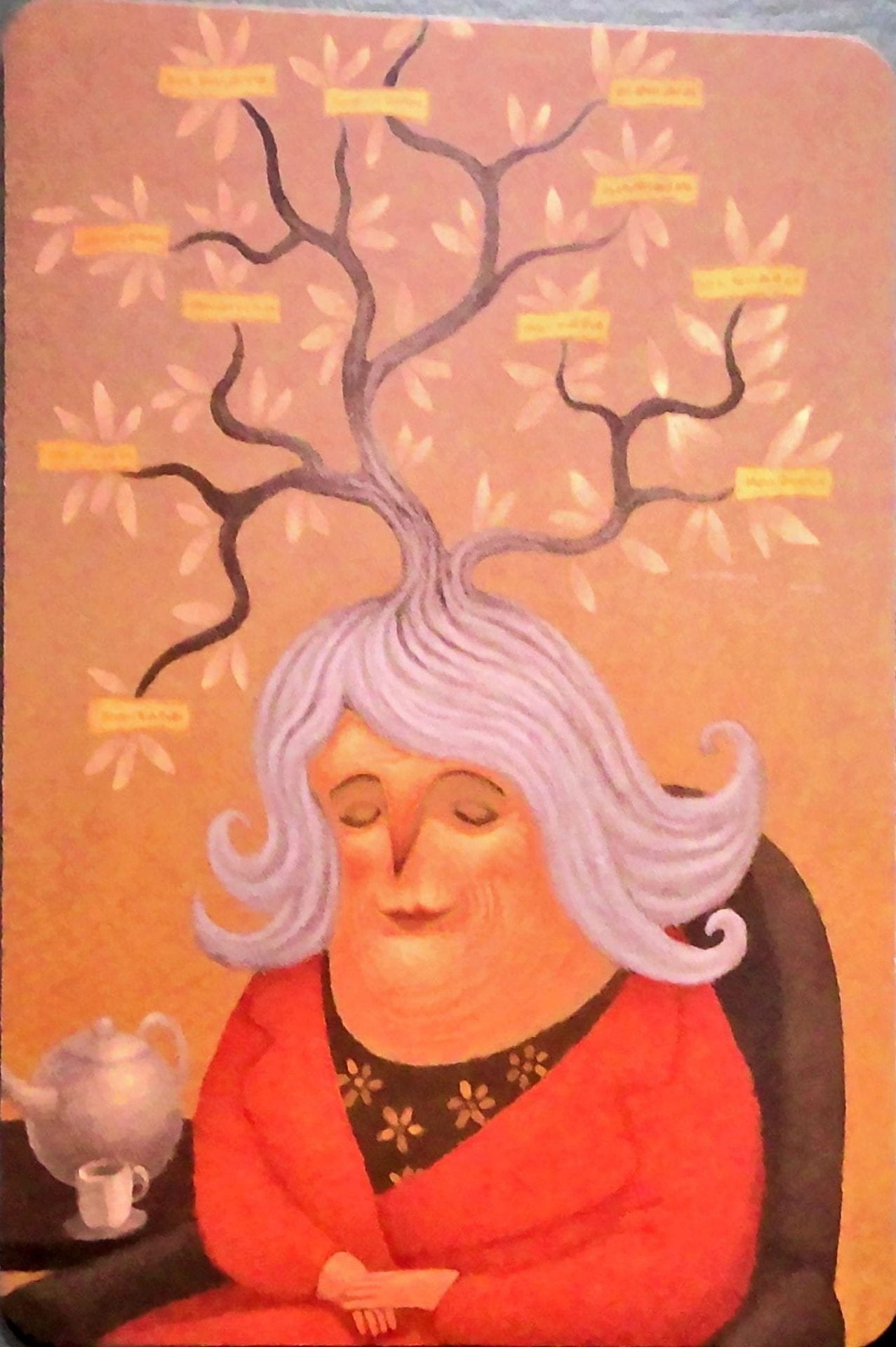

 As a teacher for Gifted and Enriched students, I have spent many hours working with teachers, parents and learners on developing Individual Education Plans (IEP) for Gifted and Enriched learners. The IEP has a clear purpose and its process for development is not a difficult one to grasp. Regardless of school, district, or even country, the IEP has similar characteristics: To identify the learner’s strengths and weaknesses, to set measurable goals and objectives, to identify the tools and resources (including people) needed, to identify the strategies needed to achieve the goals and finally, as a team, to commit. Yes, there are subtle differences in language from district to district (modification, accommodation), but the overall purpose and gist of the IEP remain the same: To set our students up for success by ensuring they are getting a fair chance at learning.
As a teacher for Gifted and Enriched students, I have spent many hours working with teachers, parents and learners on developing Individual Education Plans (IEP) for Gifted and Enriched learners. The IEP has a clear purpose and its process for development is not a difficult one to grasp. Regardless of school, district, or even country, the IEP has similar characteristics: To identify the learner’s strengths and weaknesses, to set measurable goals and objectives, to identify the tools and resources (including people) needed, to identify the strategies needed to achieve the goals and finally, as a team, to commit. Yes, there are subtle differences in language from district to district (modification, accommodation), but the overall purpose and gist of the IEP remain the same: To set our students up for success by ensuring they are getting a fair chance at learning. In another post, I shared some strategies on how to involve the students in the IEP process, Here, I emphasis the following and share examples from my own class:
In another post, I shared some strategies on how to involve the students in the IEP process, Here, I emphasis the following and share examples from my own class: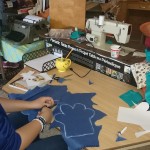 I have students attend my After School Program (STEM focused Makerspace) every Wednesday who struggle in their regular school. Many of these students struggle academically and socially. Yet, these same students, at the Makerspace, perform skills and engage in social and academic activities that demonstrate knowledge of math, science, engineering and ARTs with a proficiency beyond their age and grade level and with a strong level of motivation and confidence. It is often confusing for them for their parents. It got me thinking about the amount of Learning Disabled and Gifted students we see on a regular basis. Students that struggle to find and demonstrate ways that show what they know.
I have students attend my After School Program (STEM focused Makerspace) every Wednesday who struggle in their regular school. Many of these students struggle academically and socially. Yet, these same students, at the Makerspace, perform skills and engage in social and academic activities that demonstrate knowledge of math, science, engineering and ARTs with a proficiency beyond their age and grade level and with a strong level of motivation and confidence. It is often confusing for them for their parents. It got me thinking about the amount of Learning Disabled and Gifted students we see on a regular basis. Students that struggle to find and demonstrate ways that show what they know.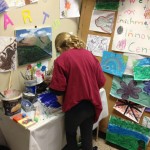 “My teachers thought I was dumb”. “I thought I was dumb” – Grade 10 Student.
“My teachers thought I was dumb”. “I thought I was dumb” – Grade 10 Student.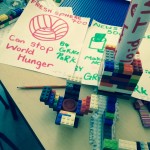 I asked the students I was working with that day (Grade Eight Gifted Students, Grade 9 – 12 Secondary Students) if the same level of engagement, trust, autonomy and safety that they felt in their Robotics Makerspace also existed or connected back into their regular classrooms.
I asked the students I was working with that day (Grade Eight Gifted Students, Grade 9 – 12 Secondary Students) if the same level of engagement, trust, autonomy and safety that they felt in their Robotics Makerspace also existed or connected back into their regular classrooms.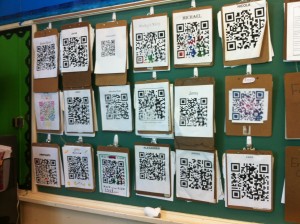
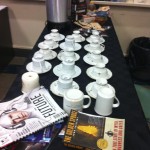
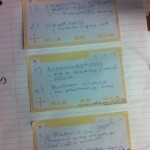
 Canada has made a strong commitment toward Truth and Reconciliation in respect to First Nations, Metis and Inuit (FNMI). This is especially important in our Education Systems because these ‘Truths’ have not always been explicitly (or implicitly) taught to children and thus, the inequities perpetuated. Reconciliation, as we know, is a process of restoring relationships or by making views and beliefs compatible with one another. When the
Canada has made a strong commitment toward Truth and Reconciliation in respect to First Nations, Metis and Inuit (FNMI). This is especially important in our Education Systems because these ‘Truths’ have not always been explicitly (or implicitly) taught to children and thus, the inequities perpetuated. Reconciliation, as we know, is a process of restoring relationships or by making views and beliefs compatible with one another. When the  Prior to these children attending these schools, what was education/learning like for them?
Prior to these children attending these schools, what was education/learning like for them?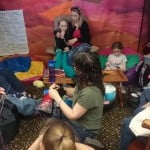
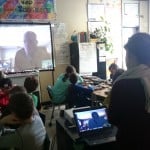
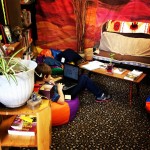 *
*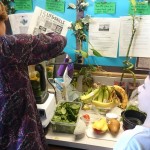 *Teachers are incorporating lessons about
*Teachers are incorporating lessons about 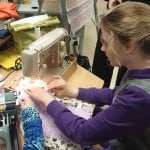 *The term
*The term 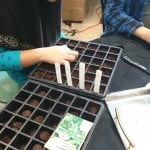
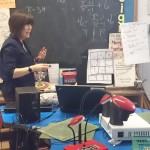 Where I co-teach with Beth Carey at the “Enrichment and Innovation Centre” (geared for Gifted Students at the HWDSB), these stipulations do not exist. A few things are important to note about our program and its uniqueness compared to a “traditional” classroom setting. First, our schedule is completely flexible. We do not have periods or subjects, there are no bell interruptions, no set lunch, no duty and no specific transition other than when to arrive and when to leave. We do not have specific seating or teaching areas. This is key because this schedule and environment allows us the time and flexibility to fully and completely immerse ourselves (teachers and students) into topics and let our natural curiosity take over. It should also be noted, that we do not start each lesson with “how it will be assessed”, but instead we leave this open-ended and students drive their own assessment through constant feedback and dialogue. With support, students monitor their own thinking and we (and they) adapt as needed.
Where I co-teach with Beth Carey at the “Enrichment and Innovation Centre” (geared for Gifted Students at the HWDSB), these stipulations do not exist. A few things are important to note about our program and its uniqueness compared to a “traditional” classroom setting. First, our schedule is completely flexible. We do not have periods or subjects, there are no bell interruptions, no set lunch, no duty and no specific transition other than when to arrive and when to leave. We do not have specific seating or teaching areas. This is key because this schedule and environment allows us the time and flexibility to fully and completely immerse ourselves (teachers and students) into topics and let our natural curiosity take over. It should also be noted, that we do not start each lesson with “how it will be assessed”, but instead we leave this open-ended and students drive their own assessment through constant feedback and dialogue. With support, students monitor their own thinking and we (and they) adapt as needed.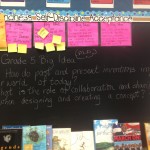 While we don’t have ‘Subjects”, we do use Big Idea questions to drive a topic. Today, for instance, we started with this question: How can LOCAL and GLOBAL citizens impact the Millennium Development Goals (MDGs)? Of course, this led to further questions: Are we working on Problems that Matter? In order to understand a problem (or perceived problem) do we need to try to live or experience that problem ourselves? What is the role in FAILURE to help us guide innovations? Of course, this is also very tightly connected to the History, Geography and Social Studies Curriculum (as well as Language, Science and Arts).
While we don’t have ‘Subjects”, we do use Big Idea questions to drive a topic. Today, for instance, we started with this question: How can LOCAL and GLOBAL citizens impact the Millennium Development Goals (MDGs)? Of course, this led to further questions: Are we working on Problems that Matter? In order to understand a problem (or perceived problem) do we need to try to live or experience that problem ourselves? What is the role in FAILURE to help us guide innovations? Of course, this is also very tightly connected to the History, Geography and Social Studies Curriculum (as well as Language, Science and Arts).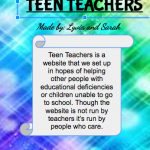 One group presented their idea, “Teen Teachers” , an idea that resembled something like a Khan Academy, except teens could join this website as ‘teachers’ or ‘students’ and learn together, as they wanted, when they wanted and what they wanted. This idea was so popular that a few other students began side conversations about how they might market this, how this could be part of their “Individual Education Plans”. Another group proposed a topic around Mental Health and Teens and suggested an organization that encouraged teens to use their musical talents, in hospitals or nursing homes, as a way to help those suffering from Mental Health disabilities. They suggested (hypothesized) that playing music for others could help the performer as much as it could help the audience.
One group presented their idea, “Teen Teachers” , an idea that resembled something like a Khan Academy, except teens could join this website as ‘teachers’ or ‘students’ and learn together, as they wanted, when they wanted and what they wanted. This idea was so popular that a few other students began side conversations about how they might market this, how this could be part of their “Individual Education Plans”. Another group proposed a topic around Mental Health and Teens and suggested an organization that encouraged teens to use their musical talents, in hospitals or nursing homes, as a way to help those suffering from Mental Health disabilities. They suggested (hypothesized) that playing music for others could help the performer as much as it could help the audience.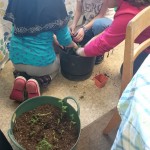 As the students collaborated, their inquiries led to further inquires and more questions. The flexibility of our day (as I noted, we do not have specified periods, recess or lunch) allowed us to veer off topic when our questions guided us in different directions. At some points, students became entrenched in their work, even when they recognized it wasn’t leading to their final outcome. The fact that we didn’t fixate on an “assessment agenda” or “evaluative criteria” freed students from the need to perform. For instance, a couple of students found themselves immersed in the Raspberri Pi’s (small computers), eventually changing their inquiry topic completely. I could write an entire chapter on the amount of problems these students had to tackle in order to get the Raspberri Pi’s running (we don’t have an ethernet internet connection). They recognized that these small computers, priced under $50.00 could solve problems relating to lack of technology access.
As the students collaborated, their inquiries led to further inquires and more questions. The flexibility of our day (as I noted, we do not have specified periods, recess or lunch) allowed us to veer off topic when our questions guided us in different directions. At some points, students became entrenched in their work, even when they recognized it wasn’t leading to their final outcome. The fact that we didn’t fixate on an “assessment agenda” or “evaluative criteria” freed students from the need to perform. For instance, a couple of students found themselves immersed in the Raspberri Pi’s (small computers), eventually changing their inquiry topic completely. I could write an entire chapter on the amount of problems these students had to tackle in order to get the Raspberri Pi’s running (we don’t have an ethernet internet connection). They recognized that these small computers, priced under $50.00 could solve problems relating to lack of technology access.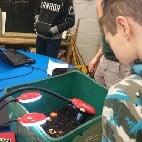 At one point, we found our Sustainable Garden group with their heads in the Worm Compost (literally) which soon became a big excitement, as student after student had to observe, touch, smell and watch these little creature do their magic (and we found thousands of little baby worms, which was very exciting). “Black- Gold or Magic Soil is what we use in our classroom garden,” we tell the students. “The worms eat our fresh fruit and vegetables and then do their job”. The students were fascinated which led to more questions about how this could be an initiative in parts of the world where fresh food wasn’t always accessible.
At one point, we found our Sustainable Garden group with their heads in the Worm Compost (literally) which soon became a big excitement, as student after student had to observe, touch, smell and watch these little creature do their magic (and we found thousands of little baby worms, which was very exciting). “Black- Gold or Magic Soil is what we use in our classroom garden,” we tell the students. “The worms eat our fresh fruit and vegetables and then do their job”. The students were fascinated which led to more questions about how this could be an initiative in parts of the world where fresh food wasn’t always accessible.


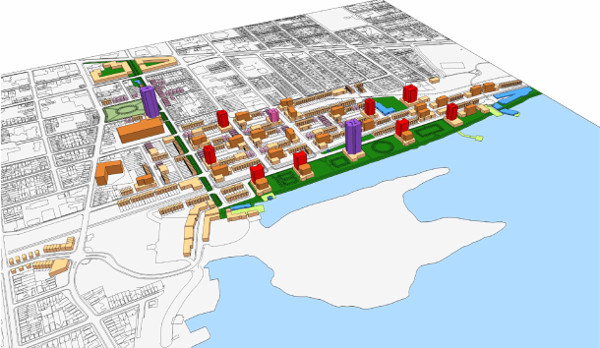






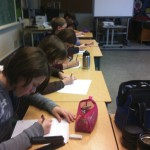
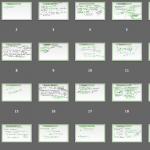
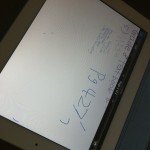 2)
2) 